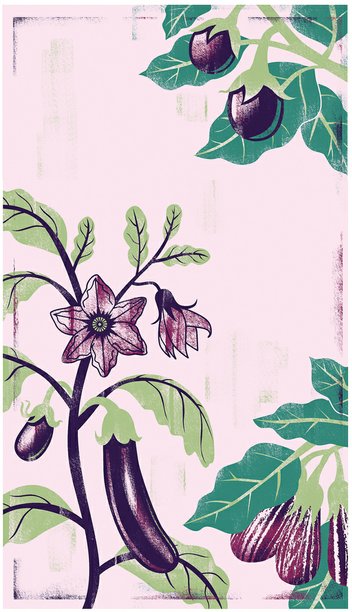I remember clearly when I saw my first Peruvian lily. It was the early 1980s, and I was in graduate school in Santa Barbara studying the tiny plankton that swim in our oceans. At the end of another weeks-long research cruise, my then boyfriend (now husband) met me at the dock with a huge hug and an equally huge bouquet of Alstroemeria, the Peruvian lilies.
I was thrilled to be back on terra firma (I get horrendously seasick) and equally thrilled by the beautiful bouquet. We both marveled at the delicate, trumpet shaped flowers with the most amazing color patterns. The flowers were the palest yellow, as I recall, with spots and dashes of deep burgundy all through their throats. Somehow, the patterns made the blooms look almost like they were smiling.

Illustration by Cristina Martinez Byvik
I’d been at sea for a long time, but honestly, the flowers had expressions.
Now, more than 20 years later, I still think Peruvian lilies have expressions. I grow four or five varieties in our garden, and I plant them in all the gardens I design. They are easy to grow, full of blooms, make excellent cut flowers, and are incredibly drought tolerant. Exactly my type of plant!
Peruvian lilies are perennials that form upright green stems from 3 feet tall all the way down to 8-inch dwarfs. Each stem is lined with delicate green leaves and topped in a cluster of up to a dozen lily-shaped trumpets, each about 3 inches long.
While my first Peruvian lilies were soft yellow and burgundy, garden hybrids range from nearly white, soft pink and soft yellow to brilliant gold, bright red and intense magenta, coral, even purple. Most are multicolored with yellow throats and those burgundy/black speckles and streaks.
Peruvian lilies are native to Chile and Argentina (ironically, not Peru).
The varieties commonly available are nearly all hybrids. The wild species live a true Mediterranean life. They sprout new stems in fall, bloom through spring, then retreat back into the ground to avoid the heat of summer. The new hybrids are “everblooming,” meaning they are bred to shorten the dormancy cycle so plants bloom nearly year-round.
If you have a Peruvian lily that goes dormant through most of the summer, chances are its an older hybrid. Nothing wrong with that; it just doesn’t bloom for quite as long as the newer ones.
Dig up a clump of Peruvian lilies and you’ll see how they survive dry times. Stems arise from fleshy, white, pinky-sized tubers that store water underground. As plants mature, they make more and more tubers. So, allow enough space (at least 4 or 5 feet across) for them to spread. If the patch gets too large, it’s easy to share those tubers. See one you love in a neighbor’s garden? Ask for some tubers to take home.
Peruvian lilies prefer well-draining soil, in the ground or in a pot. Plants need very little water once established.
They bloom best in full sun but tolerate part shade. If blooms are sparse, transplant to a sunnier location and/or increase water a bit. For maximum bloom, fertilize once in early spring and once in early fall with all-purpose, organic fertilizer.
Some older hybrids reseed aggressively. Newer ones, though, are bred for sterile flowers so they don’t reseed.
If you want cut flowers, do not cut the stems. Instead, grab a stem just a few inches below the flowers and yank (yes, YANK) the entire stem out of the ground. As stems finish blooming, yank those out, too. Somehow, yanking stimulates the tubers to sprout more flowering stems. So, the more you yank, the more flowers you get.
Some Favorite Varieties:
I’ve yet to meet a Peruvian lily I didn’t love. Here are some to start with.
‘Casa Blanca’ has white petals, each with a soft pink streak and pale yellow throat. Burgundy brown dots and dashes. Three-foot-tall stems.
‘Third Harmonic’ petals are golden orange and coral pink with burgundy dots and dashes. Three- to 4-foot-tall stems.
‘Kyty’ has butter-yellow petals with deep red dots and dashes on 3-foot-tall stems.
The ‘Princess’ series dwarf Alstroemeria have multicolored pink, orange, magenta or coral flowers with burgundy/deep brown dots and dashes. Most are under a foot tall.
Sources:
While most nurseries offer a few varieties of Alstroemeria, you’ll find the largest selection at Garden Glories in Vista. This small nursery is open by appointment, so call first (858) 449-5342 or email gardenglories@hotmail.com. www.gardengloriesnursery.com
(This entry first appeared in the San Diego Union Tribune, Saturday November 5, 2011)





